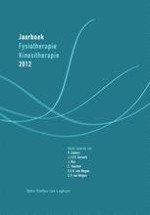Samenvatting
» Kinderen met plasproblemen kunnen vaak geholpen worden met een niet-operatieve en niet-medicamenteuze behandelstrategie, die men urotherapie noemt. Urotherapie bestaat uit een geheel van handelingen en adviezen dat het bereiken van continentie tot doel heeft. Het geven van een drankschema, het aanleren van een correcte toilethouding en het laten bijhouden van een blaasdagboek behoren tot de basis van elke behandeling opgesteld door de urotherapeut. Een urotherapeut of een therapeut die pelvische reëducatie geeft, is een fysiotherapeut die hiertoe een gespecialiseerde opleiding heeft gevolgd.
